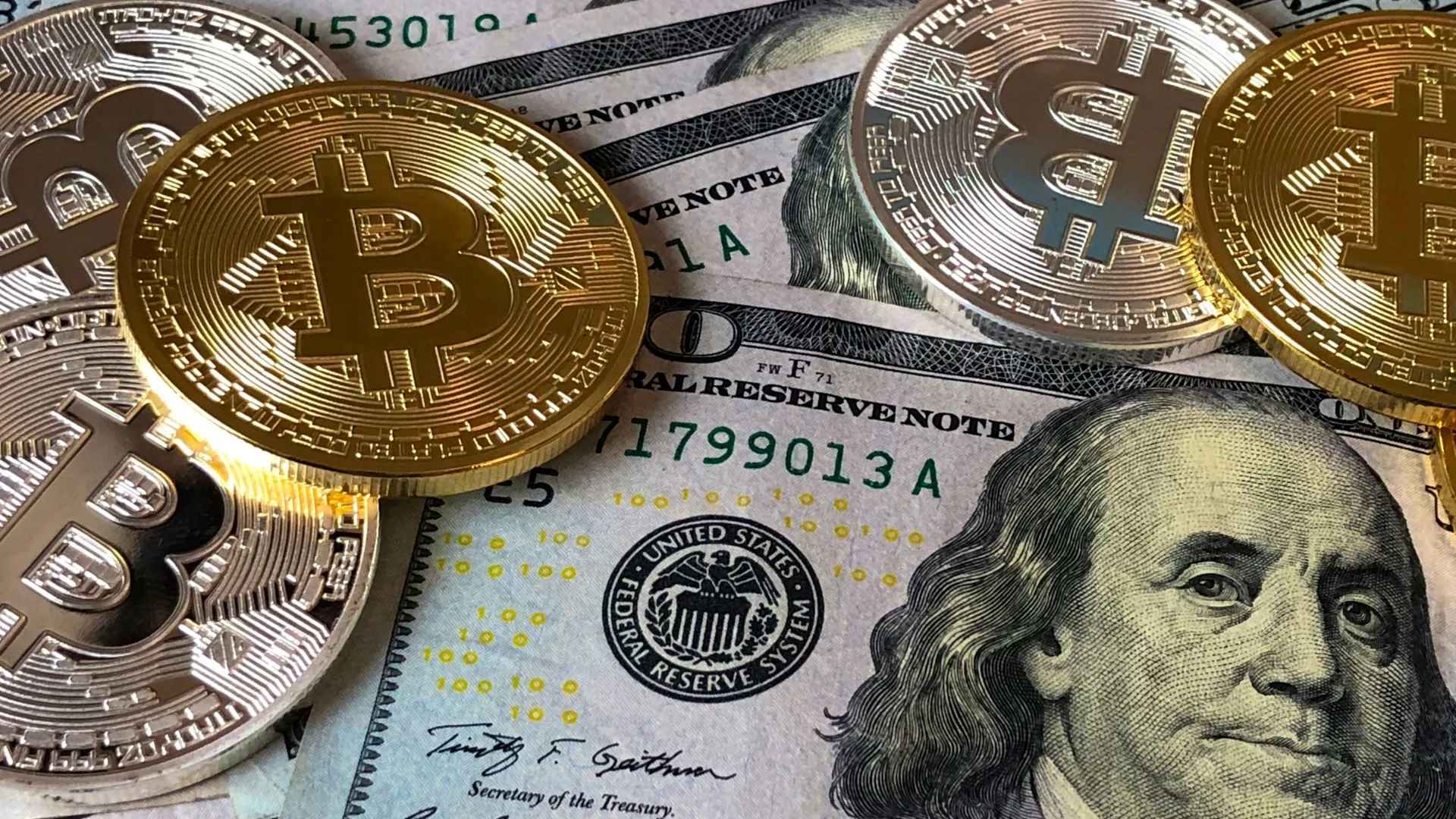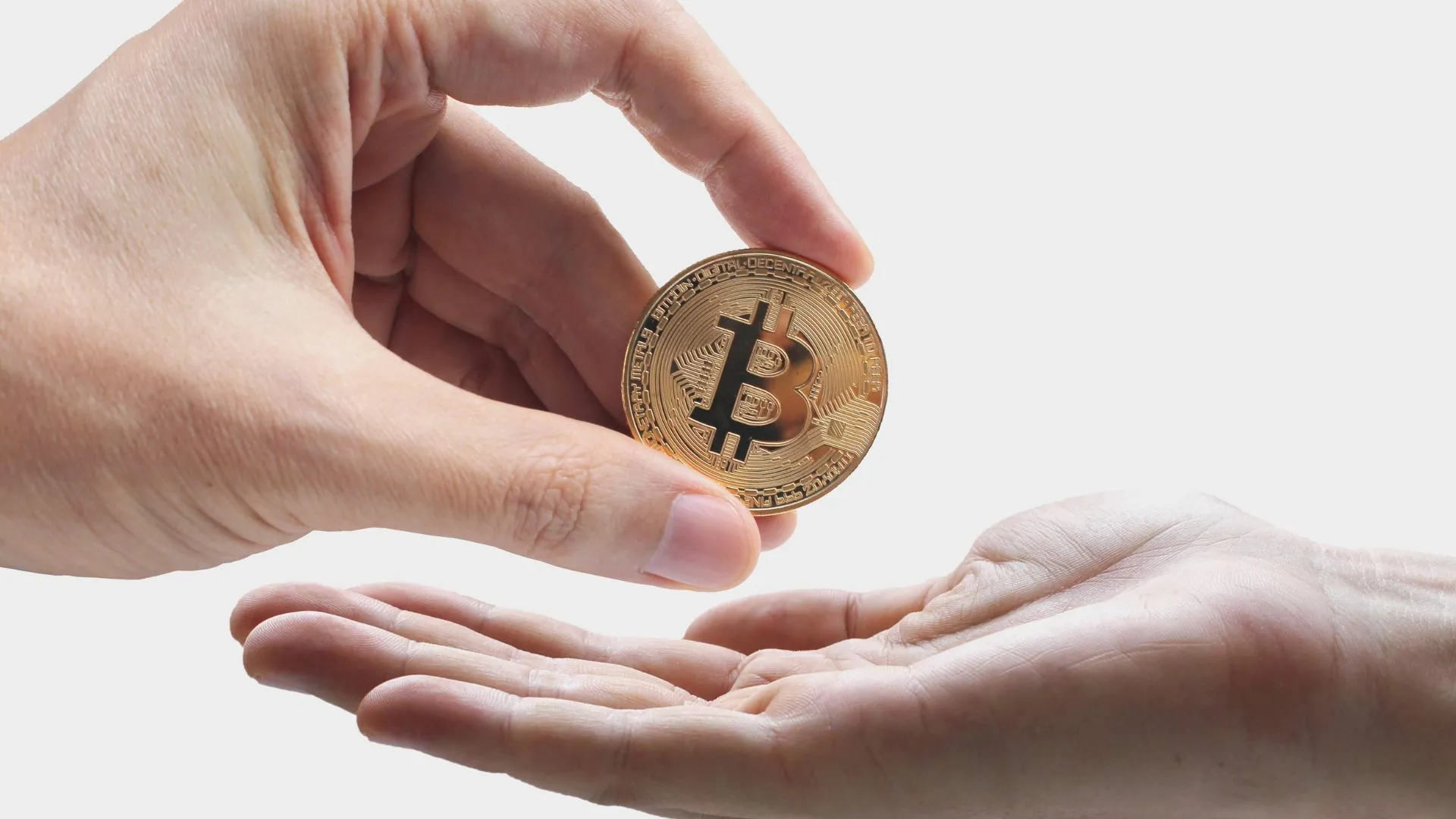You’ve probably heard of Bitcoin, but have you come across Bitcoin Cash? It can be confusing at first, since they sound so similar. Is Bitcoin Cash the same thing? How is it different? What is Bitcoin cash?
Let’s break it down in a way that’s simple to follow.
The Basics: Bitcoin vs. Bitcoin Cash
Bitcoin Cash (BCH) is a type of cryptocurrency that broke off from the original Bitcoin. You might wonder why this happened. Well, the main reason is that Bitcoin Cash was designed to make transactions faster and cheaper.
When Bitcoin first started, it was created as a decentralized digital currency. But as more people began using it, problems showed up. One of the biggest issues was that transactions could become slow and expensive when lots of people used the network at the same time.

The Birth of Bitcoin Cash
Bitcoin Cash came to life in 2017. Some Bitcoin developers and miners decided to try a different method. They wanted to fix Bitcoin’s slow transaction times and high costs.
The Problem: Bitcoin’s Growing Pains
As Bitcoin became more popular, its transaction times slowed, and fees shot up. Why? Bitcoin’s system only allowed a certain number of transactions per block, leading to delays when many people were using it.
What is a Block in Bitcoin?
Think of a block as a container that holds a group of transactions. Once a block is full, the next set of transactions has to wait for the following block to be processed. Bitcoin originally had a block size limit of 1MB, which meant only a small number of transactions could fit into each one.
Why Were Transaction Fees Rising?
When there are too many transactions waiting, users can pay higher fees to have theirs go through faster. This makes the cost of using Bitcoin go up during busy times, as users pay more to avoid waiting.
Understanding Hard Forks
A hard fork happens when a cryptocurrency splits into two separate versions. Both share the same history up to the split, but after that, they go in different directions. Bitcoin and Bitcoin Cash are a classic example of this.
What is a Hard Fork?
A hard fork is a technical event in the cryptocurrency world where a single blockchain splits into two. Both blockchains share the same history up until the split, but after the fork, they operate independently with their own rules.
This is like a software update that isn’t backward-compatible — meaning once the change happens, the old version and new version can’t communicate or work together anymore.
How Does a Hard Fork Work?
In the case of a hard fork, a group of developers decides to make changes to the code governing the blockchain. When these changes are implemented, anyone who agrees with the new rules follows the new blockchain, while those who don’t agree stick to the old one. This leads to two separate versions of the currency, both sharing the same history before the fork.
Why is it Called a “Fork”?
The term “fork” refers to how the blockchain splits into two distinct paths. Imagine a road that forks into two directions — one represents the original blockchain, and the other represents the new one with updated rules. The hard fork is permanent, meaning each path continues independently, never merging back.
Reasons for a Hard Fork
Hard forks generally happen when a community disagrees on the direction of a cryptocurrency. This disagreement can stem from various reasons, including security, scalability, or how transactions are handled. The two groups decide to part ways, creating a new version of the currency that reflects their vision.
Scalability Disagreements
One common reason for a hard fork is scalability, which refers to how many transactions a blockchain can handle at once. For example, in Bitcoin’s case, some developers and users wanted to increase the block size to allow for faster, cheaper transactions. Others felt this change could hurt Bitcoin’s security and decentralization.

Why Was Bitcoin Cash Created?
Bitcoin Cash (BCH) emerged from a need to solve Bitcoin’s growing transaction delays and high fees. As Bitcoin gained popularity, it faced scalability issues — basically, it couldn’t handle the increasing number of transactions efficiently.
The birth of this fork was a solution to these problems, offering a faster, cheaper alternative to Bitcoin. To truly understand this, we need to break it down into several parts.
Bitcoin’s Block Size Problem
The core issue that led to the creation of Bitcoin Cash revolves around Bitcoin’s block size limitation. Bitcoin operates on a blockchain – a public ledger that records all transactions. Each of these transactions is grouped into “blocks,” and each block has a fixed maximum size. Bitcoin’s block size was set at 1MB (megabyte) when it was created.
What Happens When Blocks Are Full?
With a 1MB block size, only a certain number of transactions can be included in each block. As Bitcoin became more popular, more people wanted to make transactions. But, with a limited block size, these transactions would “wait in line” to be processed. This led to a backlog, slowing down the network and causing delays in transaction confirmations.
High Transaction Fees as a Result
When Bitcoin blocks fill up, users can choose to pay higher transaction fees to prioritize their transaction over others. Miners, who process transactions, are incentivized to select transactions with the highest fees first. As a result, users found themselves paying more to have their transactions processed faster. This was especially problematic for people who wanted to use Bitcoin for small, everyday purchases since paying high fees defeated its purpose.
The Solution? Bigger Blocks
One group of developers believed the solution to Bitcoin’s slow and costly transactions was to increase the block size. Their argument was simple: if each block could hold more transactions, then the network could handle more traffic without getting clogged. This would reduce wait times and lower fees, making Bitcoin more practical for daily use.
Bitcoin Cash’s Block Size Increase
BCH was born from this idea. When it split from Bitcoin in 2017, its developers increased the block size from 1MB to 8MB. This meant that Bitcoin Cash could process many more transactions in each block, reducing the chances of a backlog. Later, the block size was increased further to 32MB, allowing even more transactions to be processed simultaneously.
What Does a Bigger Block Mean for Users?
With larger blocks, Bitcoin Cash users could enjoy faster transaction speeds and significantly lower fees. This made Bitcoin Cash an attractive option for those who wanted to use cryptocurrency for everyday transactions, like buying a coffee or transferring money without worrying about high fees or delays.
Why Didn’t Everyone Agree?
Not everyone in the Bitcoin community agreed that increasing the block size was the best solution. The disagreement was largely philosophical, with concerns over the long-term effects of bigger blocks on the network’s security and decentralization.
Concerns About Centralization
One argument against increasing the block size was that larger blocks would require more powerful computers to process. If only a few large companies could afford the equipment to mine these larger blocks, it could lead to centralization, where a small group of miners would control the network. This would go against Bitcoin’s original goal of being a decentralized currency that anyone could participate in.
Alternative Solutions: The Lightning Network
Opponents of Bitcoin Cash’s approach believed that there were better ways to solve Bitcoin’s scalability issues without increasing block size. One of the most talked-about solutions is the Lightning Network, a technology that allows smaller transactions to happen “off-chain” before being bundled and added to the blockchain. This could potentially speed up the network without risking centralization or compromising security.
The Hard Fork That Created Bitcoin Cash
This fundamental disagreement led to what is known as a “hard fork”—a split in the Bitcoin network. Those who believed in increasing the block size to solve scalability issues broke away to create Bitcoin Cash, while the rest of the community continued using Bitcoin with its original 1MB block size and focused on developing other solutions, like the Lightning Network.
BCH, with its larger block size, aimed to provide a more scalable and efficient version of Bitcoin for everyday transactions. However, the split also highlighted deep divisions in the cryptocurrency community about how to best scale and secure a digital currency for the future.

Bitcoin Cash vs. Bitcoin: What’s the Difference?
Bitcoin Cash (BCH) and Bitcoin (BTC) may have started from the same origin, but today, they operate differently. Understanding their key differences helps users choose the best one for their needs. Let’s break it down:
Block Size: Bitcoin Cash’s Larger Capacity
One of the most noticeable differences between Bitcoin Cash and Bitcoin is the size of the blocks in their blockchains. This directly affects how many transactions each network can process at once.
Bitcoin’s Block Size (1MB)
Bitcoin, the original cryptocurrency, operates with a 1MB block size. This means each block added to its blockchain can only store a limited number of transactions. As Bitcoin’s user base has grown, this limitation has led to slower processing times, especially when the network is congested with a lot of transactions waiting to be confirmed.
Bitcoin Cash’s Block Size (32MB)
Bitcoin Cash, on the other hand, was created specifically to overcome Bitcoin’s scalability issues. It started with an 8MB block size and later increased to 32MB. This allows Bitcoin Cash to process many more transactions in each block, leading to faster confirmation times and lower fees. By being able to handle more data per block, Bitcoin Cash can better accommodate everyday transactions like buying coffee or paying for groceries.
Fees: Lower Costs on Bitcoin Cash
Transaction fees are another important difference between Bitcoin and Bitcoin Cash.
Bitcoin’s Higher Transaction Fees
With its smaller block size, Bitcoin often experiences network congestion, which can drive up transaction fees. When many users are trying to send transactions at the same time, they may need to pay higher fees to ensure their transactions are processed quickly. This has made Bitcoin less practical for small, everyday purchases but still popular as a “store of value.”
Bitcoin Cash’s Lower Fees
Because Bitcoin Cash can handle more transactions at once with its larger block size, fees on the Bitcoin Cash network tend to be lower. BCH was designed with the intention of being a usable currency for everyday transactions, making it more practical for small purchases where low fees are a must.
SegWit and Lightning Network: Bitcoin’s Innovations
Bitcoin has addressed some of its transaction speed and fee problems by introducing new technologies.
What is SegWit?
Segregated Witness (SegWit) is a technology Bitcoin implemented to make transactions more efficient. It works by separating (or “segregating”) certain data in a transaction, allowing more transactions to fit into a single block. This reduces transaction size and speeds up the process without increasing the block size itself.
Lightning Network: Off-Chain Transactions
The Lightning Network is another innovation Bitcoin supports. It allows users to create payment channels between two parties where multiple transactions can happen “off-chain” before being recorded on the main Bitcoin blockchain. This speeds up transactions and reduces fees by processing them outside of the main network.
Bitcoin Cash Doesn’t Support SegWit or Lightning Network
Bitcoin Cash, however, doesn’t implement either SegWit or the Lightning Network. Its focus is on increasing the block size to improve transaction speed and keep fees low, rather than relying on off-chain solutions.
Bitcoin and Bitcoin Cash offer different approaches to cryptocurrency transactions. Bitcoin’s innovations like SegWit and the Lightning Network focus on enhancing the original system, while Bitcoin Cash’s larger blocks aim to improve transaction efficiency directly on the blockchain.

Real-World Uses of Bitcoin Cash
Bitcoin Cash (BCH) was designed with everyday transactions in mind, offering lower fees and faster transaction speeds compared to Bitcoin. Here’s how it fits into real-world scenarios:
Everyday Payments: Sending Money to Friends and Family
One of the primary uses of Bitcoin Cash is for peer-to-peer transfers. If you want to send money to someone, whether they’re across town or across the globe, Bitcoin Cash can make that easier and cheaper than traditional methods like bank transfers or remittance services.
Why Bitcoin Cash is Ideal for Peer-to-Peer Payments
- Low Transaction Fees: Unlike Bitcoin, which can have high fees during busy times, Bitcoin Cash’s larger block size keeps fees low. This makes it practical for smaller transactions, like splitting a bill or paying back a friend for lunch.
- Speed: Bitcoin Cash processes transactions more quickly than Bitcoin due to its ability to handle more transactions per block, which reduces delays.
Paying for Goods and Services: Online and In-Store
Another major use of Bitcoin Cash is purchasing goods and services. More merchants are accepting cryptocurrency as payment, and Bitcoin Cash is often favored for its efficiency.
Why Bitcoin Cash Works for Shopping
- Lower Costs for Small Purchases: If you’re buying a cup of coffee or paying for a service, Bitcoin Cash’s low fees are a big plus. High Bitcoin fees wouldn’t make sense for these small transactions, but Bitcoin Cash remains affordable.
- Growing Merchant Support: Some online stores, and even physical businesses, are starting to accept Bitcoin Cash due to its practicality for daily transactions.
Cross-Border Payments: International Transfers
Sending money across borders can be expensive and slow with traditional financial institutions, but Bitcoin Cash can simplify this process.
Bitcoin Cash and International Payments
- No Need for Banks: You don’t need to go through a bank or a third party when using Bitcoin Cash, making it easier and faster to send money across countries.
- Reduced Fees Compared to Banks: Cross-border payments typically involve hefty bank fees or remittance service charges. Bitcoin Cash offers a much cheaper alternative.
E-Commerce: Buying Online with Bitcoin Cash
For online shopping, Bitcoin Cash is becoming a convenient option. Many e-commerce platforms that accept cryptocurrency offer Bitcoin Cash as a payment option due to its transaction benefits.
Why E-Commerce Favors Bitcoin Cash
- Instant Transactions: Online shoppers can complete their purchases quickly without waiting for long transaction processing times.
- Low Cost for Merchants: Merchants benefit from Bitcoin Cash’s low fees, which can make accepting cryptocurrency a better financial choice than traditional credit card processors, which charge higher transaction fees.
Bitcoin Cash has practical, real-world applications for anyone who needs to send money, pay for goods, or complete transactions efficiently. Its design for speed and affordability makes it an attractive option for everyday use.
The Future of Bitcoin Cash
Bitcoin Cash has made a name for itself in the crypto world, and it continues to be a popular option for those who want to use cryptocurrency for daily payments. While it’s not as widely accepted as Bitcoin, many businesses and platforms support BCH, and its community is still growing.
At the same time, the debate between Bitcoin and Bitcoin Cash supporters is far from over. Bitcoin remains the dominant player in the crypto world, but Bitcoin Cash’s promise of faster, cheaper transactions keeps it in the running.
To sum it all up, Bitcoin Cash is basically a version of Bitcoin that focuses on making transactions faster and cheaper by increasing block size. It was created because not everyone agreed on how to fix Bitcoin’s scalability problem, leading to a split in the network.
Bitcoin Cash might be more practical for everyday transactions, but it comes with its own set of challenges, like concerns over centralization. Whether it’s better than Bitcoin depends on what you’re looking for—a store of value or a fast, low-fee way to make payments.
No matter which side you’re on, it’s clear that the crypto world is constantly evolving, and both Bitcoin and Bitcoin Cash are important players in shaping the future of digital money.




Recent Comments